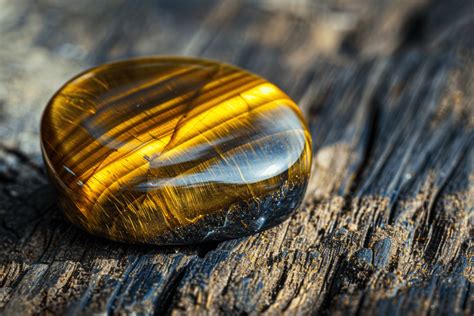Silver crystals, characterized by their lustrous metallic sheen, intricate structures, and remarkable properties, have captivated scientists and industries for centuries. These crystalline wonders, composed of pure silver atoms arranged in a highly ordered lattice, unlock a world of applications in various scientific and technological domains. In this comprehensive guide, we delve into the fascinating world of silver crystals, exploring their properties, applications, and the innovative ways they are revolutionizing diverse fields.

Unraveling the Structure and Properties of Silver Crystals
Silver crystals possess a face-centered cubic (fcc) crystal structure, where silver atoms occupy the corners and centers of each cube. This highly symmetrical arrangement results in a high degree of crystallinity, granting silver crystals exceptional structural stability and electrical conductivity.
Key Properties of Silver Crystals:
- High Electrical Conductivity: The free electron gas within silver crystals allows for the efficient flow of electric current, making them highly conductive materials.
- Excellent Thermal Conductivity: Silver crystals exhibit high thermal conductivity, enabling them to conduct heat effectively.
- Antibacterial Properties: Silver ions released from silver crystals have been shown to possess antimicrobial properties, inhibiting the growth of bacteria and other microorganisms.
- Flexibility and Ductility: Silver crystals are relatively soft and pliable, allowing them to be easily deformed and shaped into intricate forms.
- Reflectivity: Silver crystals exhibit a high degree of reflectivity, particularly in the visible spectrum, and are often used as reflective surfaces in optical applications.
Silver Crystals: A Kaleidoscope of Applications
The unique properties of silver crystals have led to their widespread adoption across a plethora of scientific, medical, and industrial domains. These crystalline marvels find applications in:
Electronics and Electrical Engineering
- Electrical Conductors: Silver crystals are employed as electrical conductors in printed circuit boards (PCBs), wires, and other electronic components due to their exceptional electrical conductivity.
- Soldering and Brazing: Silver crystals are widely used as soldering and brazing alloys, providing strong and reliable metallic bonds.
Medical and Biological Sciences
- Antibacterial Agents: Silver nanoparticles, derived from silver crystals, are incorporated into medical devices, dressings, and coatings to inhibit bacterial growth.
- Medical Imaging: Silver crystals are used in X-ray imaging as a contrast agent, enhancing the visibility of certain tissues and organs.
Jewelry and Decorative Arts
- Sterling Silver: Silver crystals are alloyed with copper to create sterling silver, a durable and beautiful material used in jewelry, silverware, and other decorative items.
- Jewelry Design: Silver crystals are employed in intricate jewelry designs, showcasing their aesthetic appeal and versatility.
Optics and Photonics
- Mirrors and Reflective Surfaces: Silver crystals are used to create high-quality mirrors and reflective surfaces, such as those found in telescopes, microscopes, and lasers.
- Optical Lenses: Silver crystals can be shaped into optical lenses, enabling them to focus and manipulate light for various applications.
Innovative Applications of Silver Crystals
Beyond their traditional uses, silver crystals continue to inspire researchers and innovators to explore new applications across diverse fields. These cutting-edge endeavors include:
- Flexible Electronics: Thin films of silver crystals can be deposited onto flexible substrates, enabling the development of bendable and stretchable electronic devices.
- Biomedical Sensors: Silver crystals are integrated into biosensors for the detection of specific molecules or analytes in biological samples.
- Catalysis: Silver crystals are used as catalysts in chemical reactions, enhancing their efficiency and selectivity.
- Nanotechnology: Silver nanoparticles derived from silver crystals find applications in drug delivery, electronics, and energy storage.
The Future of Silver Crystals
The demand for silver crystals continues to rise as scientists and engineers explore their potential in a plethora of applications. As research and development efforts intensify, we can expect to witness even more groundbreaking applications of these remarkable crystalline wonders. From flexible solar cells to advanced medical diagnostics, the future holds immense promise for the transformative power of silver crystals.
Key Questions and Considerations
- What are the most promising applications of silver crystals in different industries?
- How can we optimize the synthesis and fabrication of silver crystals for specific applications?
- What are the challenges and limitations associated with the use of silver crystals?
- How can we explore novel applications of silver crystals beyond their current uses?
Step-by-Step Approach to Working with Silver Crystals
- Material Selection: Select high-purity silver crystals for your application.
- Crystal Preparation: Clean and prepare the silver crystals to ensure proper functionality.
- Crystal Manipulation: Utilize appropriate techniques, such as deposition or etching, to manipulate the crystals into desired shapes or structures.
- Characterization: Characterize the properties and structure of the silver crystals using appropriate analytical methods.
- Integration: Integrate the silver crystals into your desired application or device.
Why Silver Crystals Matter
Silver crystals, with their remarkable properties and versatile applications, play a crucial role in advancing various fields. Their exceptional electrical conductivity, thermal stability, and antibacterial properties make them indispensable for electronic devices, medical applications, and industrial processes. By harnessing the power of silver crystals, we can unlock transformative technologies that address global challenges and improve our lives.
Benefits of Using Silver Crystals
The incorporation of silver crystals in various applications offers a multitude of benefits:
- Enhanced electrical performance in electronic devices
- Improved antimicrobial effectiveness in medical settings
- Increased durability and aesthetics in jewelry and decorative arts
- Novel optical properties for cutting-edge photonics applications
- Potential for innovative applications in emerging fields, such as flexible electronics and nanotechnology
Informative Tables
Table 1: Properties of Silver Crystals
| Property | Value |
|---|---|
| Crystal Structure | Face-centered cubic (fcc) |
| Electrical Conductivity | 63 x 10^6 S/m |
| Thermal Conductivity | 429 W/m·K |
| Density | 10.49 g/cm³ |
| Melting Point | 961.78 °C |
Table 2: Applications of Silver Crystals
| Industry | Application |
|---|---|
| Electronics | Electrical conductors, soldering alloys |
| Medical | Antibacterial agents, contrast agents |
| Jewelry | Sterling silver, jewelry designs |
| Optics | Mirrors, lenses |
| Nanotechnology | Drug delivery, electronics |
Table 3: Innovative Applications of Silver Crystals
| Application | Description |
|---|---|
| Flexible Electronics | Bendable and stretchable electronic devices |
| Biomedical Sensors | Detection of specific molecules or analytes |
| Catalysis | Enhanced efficiency and selectivity of chemical reactions |
| Nanomedicine | Drug delivery, imaging, and therapy |
Table 4: Benefits of Using Silver Crystals
| Industry | Benefit |
|---|---|
| Electronics | Improved electrical performance |
| Medical | Enhanced antimicrobial effectiveness |
| Jewelry | Increased durability and aesthetics |
| Optics | Novel optical properties |
| Emerging Fields | Potential for innovative applications |




























